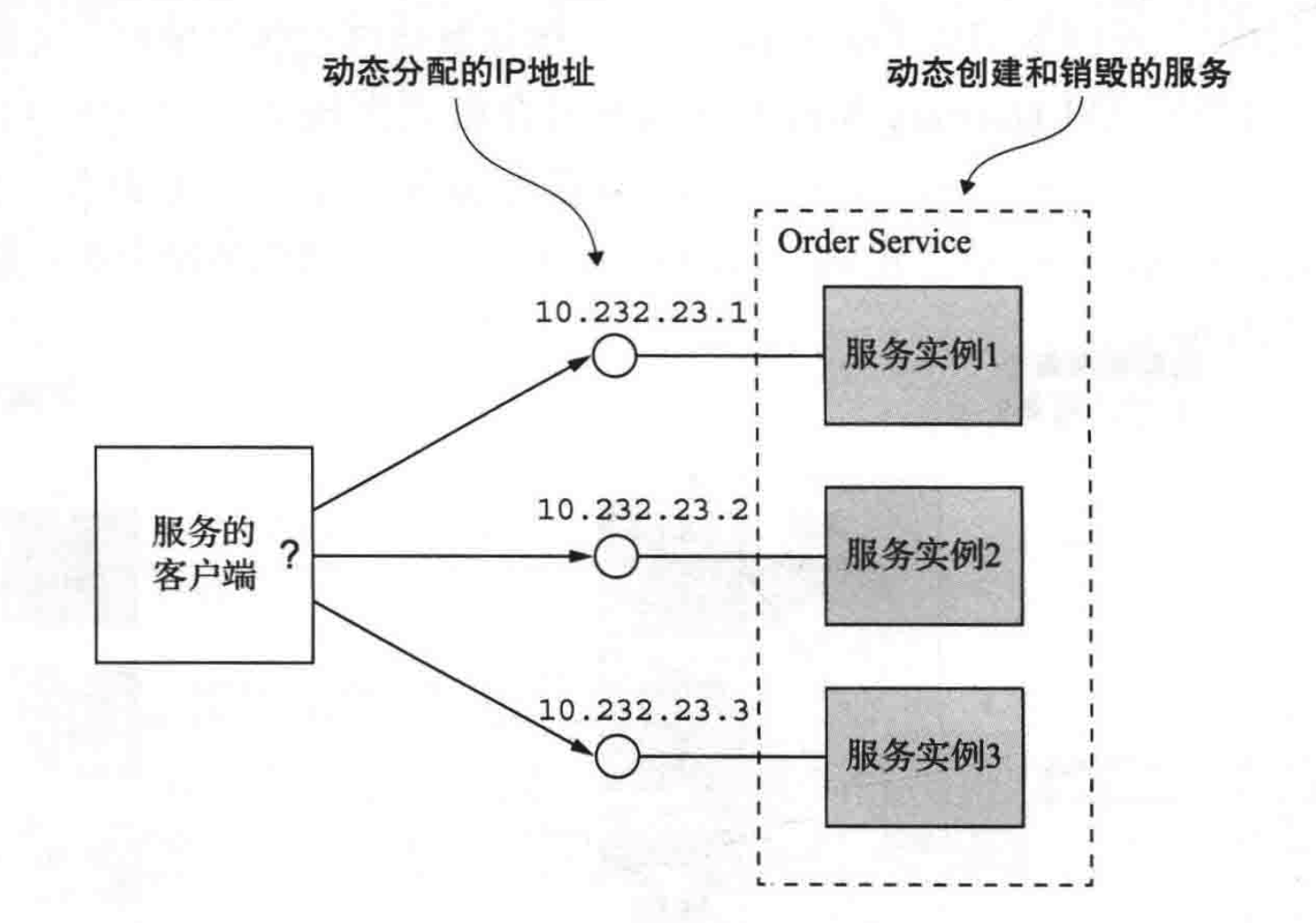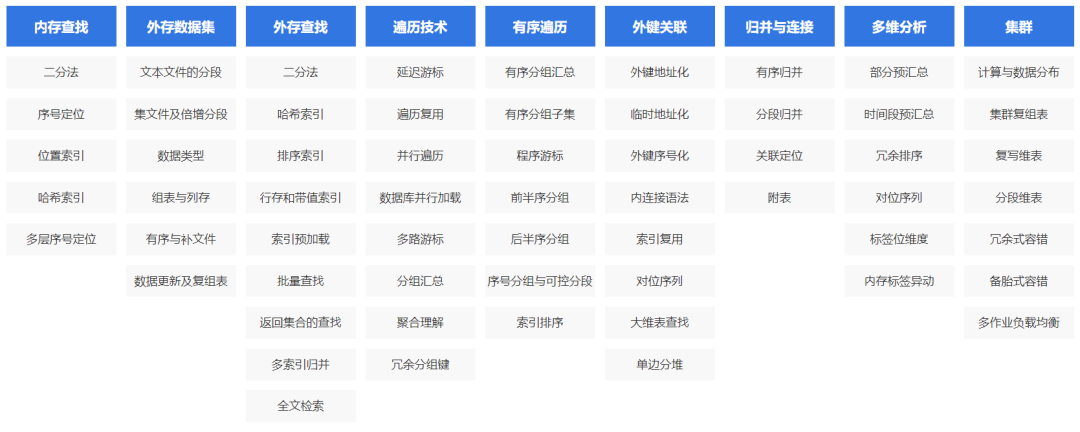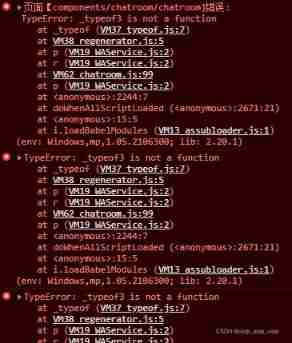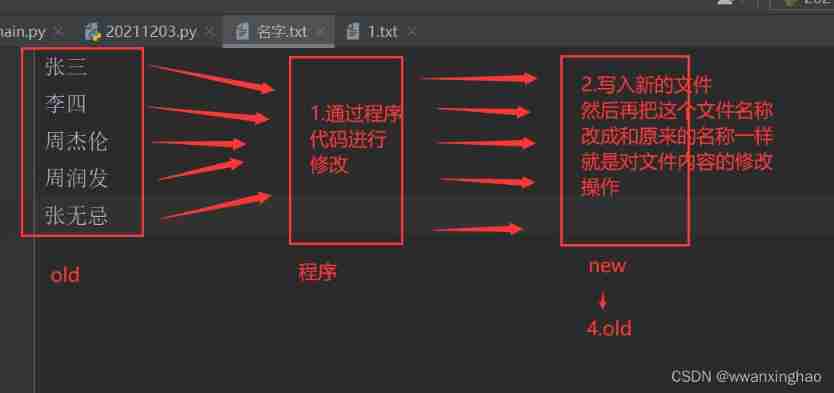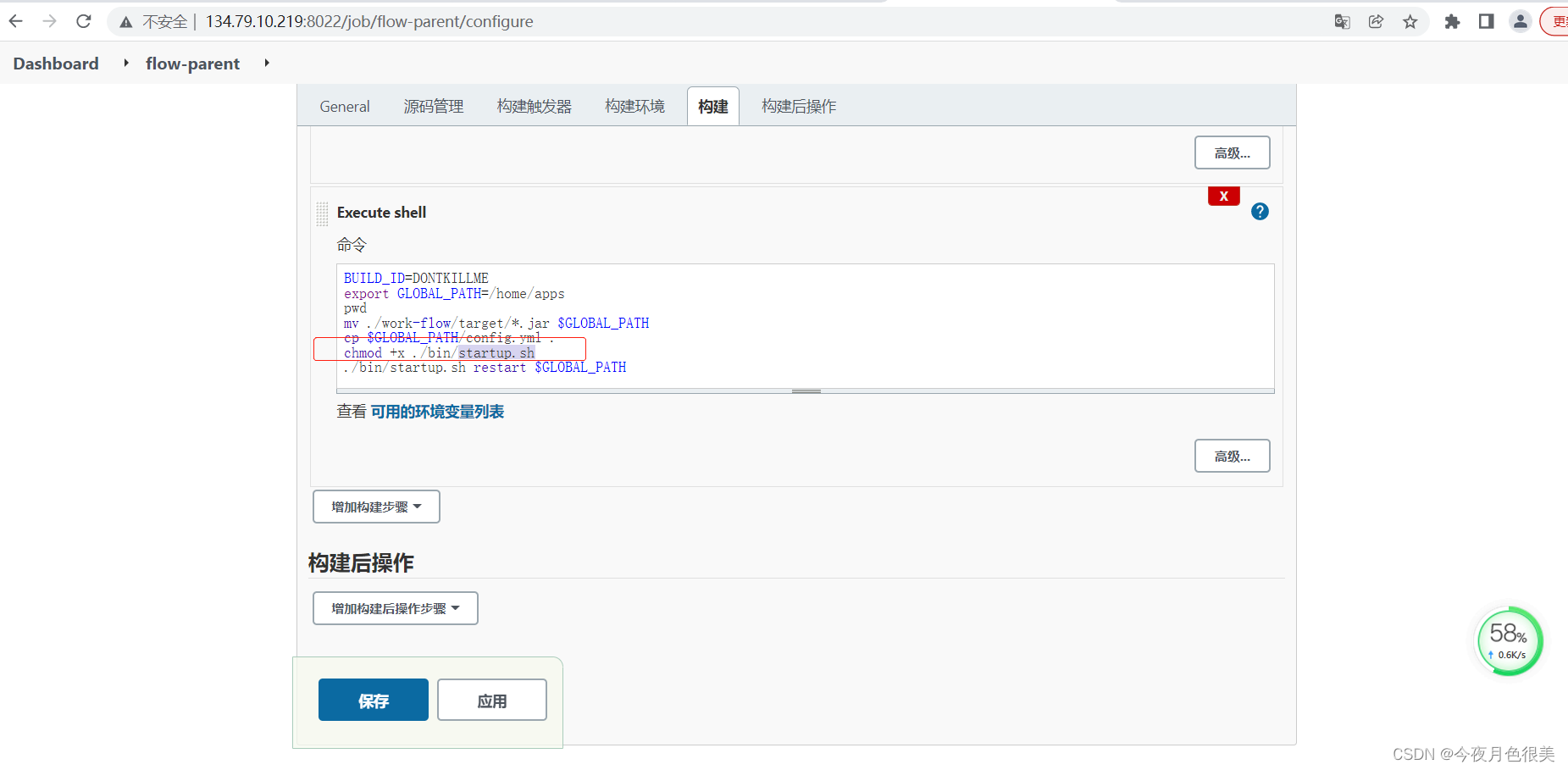当前位置:网站首页>Deep parsing pointer and array written test questions
Deep parsing pointer and array written test questions
2022-07-06 03:10:00 【iYYu】
Catalog
Preface
The previous article delved into the knowledge of pointers and pointer types , and The purpose of this paper is to analyze various written test questions of pointers and arrays To consolidate the understanding of pointer and deepen the mastery of pointer .
First, let's review the meaning of array names :
In most cases, the array name represents the address of the first element of the array , But there are Two exception :
- sizeof( Array name ), The array name here represents the whole array ,sizeof It calculates the space occupied by the entire array .
notes : Must be sizeof Inside A separate Put an array name to represent the whole array , Otherwise, the address of the first element of the array .- & Array name , The address taken here is the address of the entire array .
Only the above two exceptions , The rest of the array names represent the address of the first element of the array .
32 The space occupied by the pointer under the bit machine is 4 Bytes ,64 Next is 8.
1. Pointer and array written test question analysis
1.1 One dimensional array
int a[] = {
1,2,3,4};
printf("%d\n",sizeof(a));//16
// Here is the sizeof( Array name ), Represents the entire array
// The size of the entire array is calculated in bytes
printf("%d\n",sizeof(a+0));//4/8
// At first glance a+0 It's equal to not adding , It still represents the whole array
// however sizeof There is not a single array name inside , No address
// So it doesn't represent the whole array
// So here's a It stands for
// Address of the first element of the array ,+0 It's equal to not adding , It's the address , Namely 4/8 Bytes .
printf("%d\n",sizeof(*a));//4
// It's not alone here sizeof Inside , Therefore, it represents the address of the first element
// That is, dereference the address of the first element , Get the first element of the array , Size is 4 Bytes
printf("%d\n",sizeof(a+1));//4/8
// Again a Not alone in sizeof Inside , Represents the address of the first element
// First element address +1 Is the address of the second element , The size of the address is 4/8 Bytes
printf("%d\n",sizeof(a[1]));//4
// Here we calculate the memory space occupied by the second element of the array , yes 4 Bytes
printf("%d\n",sizeof(&a));
// Here take the address of the array , Is the address is also 4/8 Bytes
printf("%d\n",sizeof(*&a));///16
// Take the address of the array &a--> int (*)[4] It is the type of
// Then dereference the array pointer , We get the array again
// Therefore, the calculation is the size of the space occupied by the array
// You can understand that * and & Offset , There is only one array name left
printf("%d\n",sizeof(&a+1));//4/8
// The address taken here is the address of the entire array &a--> int (*)[4]
// Array pointer +1 Skip the entire array backwards , Point to the starting position of the next array
// So it's the address , Namely 4/8 Bytes
printf("%d\n",sizeof(&a[0]));//4/8
// Take the address of the first element
// It calculates the size of the address
printf("%d\n",sizeof(&a[0]+1));//4/8
// Take the address of the first element ,+1 Is the address of the second element
// It calculates the size of the address
1.2 A character array
char arr[] = {
'a','b','c','d','e','f'};
printf("%d\n", sizeof(arr));//6
// Here is sizeof Put a separate array name inside , Then the calculation is
// The size of the space occupied by the whole array , Unit is byte
printf("%d\n", sizeof(arr+0));//4/8
//arr+0 Represents the address of the first element of the array
// Address size 4/8 Bytes
printf("%d\n", sizeof(*arr));//1
// Not alone in sizeof The interior is so arr It's the first element address
// The first element address dereference results in the first element of the array , The size is one byte
printf("%d\n", sizeof(arr[1]));//1
// Calculate the size of the second element
printf("%d\n", sizeof(&arr));//4/8
// Address fetch arr It takes out the address of the entire array
// Yes, the address size is 4/8 Bytes
printf("%d\n", sizeof(&arr+1));//4/8
// Fetch the address of the entire array +1, Represents skipping the entire array
// Point to the starting position of the next array .
// Then it's also the address , Size is 4/8 Bytes
printf("%d\n", sizeof(&arr[0]+1));//4/8
//&arr[0]+1 Is the address of the second element
// Address size 4/8
Be careful : The same array , But it's not sizeof 了 .
char arr[] = {
'a','b','c','d','e','f'};
printf("%d\n", strlen(arr));// Random value
//strlen Is to find the length of the string , Find out \0 The length before
// The initialization of the above character array does not \0
// And the data in memory is continuously stored
// therefore strlen Will always look back , Until I find \0
// So the final result is random
printf("%d\n", strlen(arr+0));// Random value
//arr+0 Or the first element address , So the principle is the same as above
printf("%d\n", strlen(*arr));// Report errors
//strlen The parameter of is the starting address of the array
//*arr Is a character a Pass as parameter to strlen
// character a Of ASCII Code value is 97
//strlen(97),97 Your address obviously doesn't belong to us
// This leads to the problem of wild pointer , So the program will report an error
printf("%d\n", strlen(arr[1]));// Report errors
// Alphabet character b Pass to strlen, The principle of same
printf("%d\n", strlen(&arr));// Random value
// It also starts from the starting address of the array and looks backwards \0
printf("%d\n", strlen(&arr+1));// Random value -6
// Take out arr The address of +1 Skip the entire character array
// Point to the starting address of the following array
// A from &arr Start looking for , A from &arr+1 Start looking for
// So the final result is a random value -6
printf("%d\n", strlen(&arr[0]+1));// Random value -1
// Start from the second element address and look backwards
What is the difference between string initialization and the above ?
char arr[] = "abcdef";
printf("%d\n", sizeof(arr));//7
//[a b c d e f \0]
// The end of the string comes with \0, And here sizeof An internal single array name
// It calculates the memory space occupied by the entire array ,7 Bytes
printf("%d\n", sizeof(arr+0));//4/8
// Not alone in sizeof Inside , there arr Represents the address of the first element
//arr+0 It hasn't changed , So it's the address , Size is 4/8 Bytes
printf("%d\n", sizeof(*arr));//1
// Not alone in sizeof Inside ,arr It's the first element address
// Dereference to get the first element , Size is 1 Bytes
printf("%d\n", sizeof(arr[1]));//1
// Calculate the size of the second element ,1 Bytes
printf("%d\n", sizeof(&arr));//4/8
// Fetch the address of the entire array , Yes, the address is 4 or 8 Bytes
printf("%d\n", sizeof(&arr+1));//4/8
// Fetch the address of the entire array +1 Skip the entire array backwards
// Point to the starting address of the next array , The address is 4/8 Bytes
printf("%d\n", sizeof(&arr[0]+1));//4/8
// Take out the first element address +1 Is the address of the second element
// Yes, the address size is 4/8 Bytes
Be careful : The same array , But it's not sizeof 了 .
char arr[] = "abcdef";
printf("%d\n", strlen(arr));//6
// here arr It's the first element address , Calculation \0 Previous string length
printf("%d\n", strlen(arr+0));//6
//arr+0 Or the first element address
printf("%d\n", strlen(*arr));// Report errors
//strlen The function parameter of is address
// And here is a character variable
printf("%d\n", strlen(arr[1]));// Report errors
// The principle of same
printf("%d\n", strlen(&arr));//6
//&arr Take the address of the array , The address of the array also starts from the address of the first element of the array
// The length is still 6
printf("%d\n", strlen(&arr+1));// Random value
// Skip the whole arr Array , Start from the back of the array \0
// I don't know when I will meet \0
printf("%d\n", strlen(&arr[0]+1));//5
// First element address +1, Count backwards from the second element address
char *p = "abcdef";
//p Is a pointer , Put the constant string abcdef The first element address of is stored in p in
printf("%d\n", sizeof(p));//4/8
//p It's a pointer variable , The pointer size is 4/8 Bytes
printf("%d\n", sizeof(p+1));//4/8
//p yes char Type a pointer , that p+1 The address to the next element
// Yes, the address is 4/8 Bytes
printf("%d\n", sizeof(*p));//1
//p Address of the first element stored , Dereference access character a
//a Take up a byte
printf("%d\n", sizeof(p[0]));//1
// ditto
printf("%d\n", sizeof(&p));//4/8
// Pointer to the variable p It will also open up its own memory space in memory
// Take out p The address of , It's the address 4/8 Bytes
printf("%d\n", sizeof(&p+1));//4/8
//&p It's an address ,+1 It's also an address
printf("%d\n", sizeof(&p[0]+1));//4/8
// Take the address of the first character ,+1 Is the address of the second element
char *p = "abcdef";
printf("%d\n", strlen(p));//6
//p What's in it is a The address of , So from a Count back
printf("%d\n", strlen(p+1));//5
//p+1 Is the address of the second element , Count backwards from the second element
printf("%d\n", strlen(*p));// Report errors
//strlen The parameter of the function is the address , And here is 'a'
printf("%d\n", strlen(p[0]));// Report errors
// ditto
printf("%d\n", strlen(&p));// Random value
// Different from the array name , Take out p The address of the space opened in memory and
// The address of the first element of the string doesn't matter , from p Count back
// When did you meet \0 Is random
printf("%d\n", strlen(&p+1));// Random value
// ditto
printf("%d\n", strlen(&p[0]+1));//5
// Count backwards from the address of the second element
1.3 Two dimensional array
int a[3][4] = {
0};
printf("%d\n",sizeof(a));//48
// A two-dimensional array of three rows and four columns
// The total size of the array is 3*4*4 = 48
printf("%d\n",sizeof(a[0][0]));//4
// The first element in the first line , The size is 4
printf("%d\n",sizeof(a[0]));//16
// It's understandable :
//a[0] Is the array name in the first row
//a[1] Is the array name in the second line
//a[2] Is the array name in the third line
// The array list is placed alone in sizeof The internal calculation is the size of the entire first row array
printf("%d\n",sizeof(a[0]+1));//4/8
//a[0]+1 == &a[0][0]+1
// Not alone in sizeof Inside
// Here a[0] It represents the address of the first element in the first row of the array
//+1 Is the array of the second element in the first row
// Yes, the address is 4/8 Bytes
printf("%d\n",sizeof(*(a[0]+1)));//4
// It says a[0]+1 Is the address of the second element in the first line
// Then the second element is obtained by dereferencing it
// Size is 4 Bytes
printf("%d\n",sizeof(a+1));//4/8
//a Not alone in sizeof There is no internal address
// there a Represents the address of the first row of the two-dimensional array
//+1 Is the address on the second line
// Yes, the address size is 4 Bytes
printf("%d\n",sizeof(*(a+1)));//16
//a+1 Is the address on the second line , Dereference to get the array of the second row
// Here we calculate the size of the second row array
printf("%d\n",sizeof(&a[0]+1));//4/8
// Get the address of the first row of the array
//+1 Get the address on the second line , The address is 4/8 Bytes
printf("%d\n",sizeof(*(&a[0]+1)));//16
// Take out one line of address +1 Is the address on the second line
// Then dereference to get the array of the second row
// Here we calculate the size of the second row array
printf("%d\n",sizeof(*a));//16
//a Represents the address of the first element , It's the address on the first line
// If you dereference the first line, you will get the first line
// The size of this row of arrays is calculated
printf("%d\n",sizeof(a[3]));//16
// There is no fourth line ,sizeof Will not visit the bank
//sizeof Just focus on its type , So it's equivalent to a[0]
// The array list is placed alone in sizeof Inside
// Calculate the size of the row array
// Be careful :sizeof Just know its type , You can analyze
// The space occupied by this type
summary
The meaning of array names :
- sizeof( Array name ), The array name here represents the entire array , It calculates the size of the entire array .
- & Array name , The array name here represents the entire array , It takes out the address of the entire array .
- In addition, all array names represent the address of the first element .
边栏推荐
- codeforces每日5题(均1700)-第六天
- How to accurately identify master data?
- Performance analysis of user login TPS low and CPU full
- 故障分析 | MySQL 耗尽主机内存一例分析
- C语言sizeof和strlen的区别
- BUUCTF刷题笔记——[极客大挑战 2019]EasySQL 1
- XSS challenges bypass the protection strategy for XSS injection
- Redis cluster deployment based on redis5
- Solve 9 with C language × 9 Sudoku (personal test available) (thinking analysis)
- [Chongqing Guangdong education] higher mathematics I reference materials of Southwest Petroleum University
猜你喜欢
随机推荐
[ruoyi] ztree custom icon (iconskin attribute)
Classic interview question [gem pirate]
【若依(ruoyi)】设置主题样式
codeforces每日5題(均1700)-第六天
JS regular filtering and adding image prefixes in rich text
Analyze 菜单分析
How does yyds dry inventory deal with repeated messages in the consumption process?
[kubernetes series] learn the exposed application of kubernetes service security
Tomb. Weekly update of Finance (February 7 - February 13)
#PAT#day10
Solve 9 with C language × 9 Sudoku (personal test available) (thinking analysis)
Problems encountered in 2022 work IV
Audio audiorecord binder communication mechanism
tcpdump: no suitable device found
I sorted out a classic interview question for my job hopping friends
【若依(ruoyi)】启用迷你导航栏
Prototype design
Codeworks 5 questions per day (1700 average) - day 6
C language - Blue Bridge Cup - promised score
银行核心业务系统性能测试方法

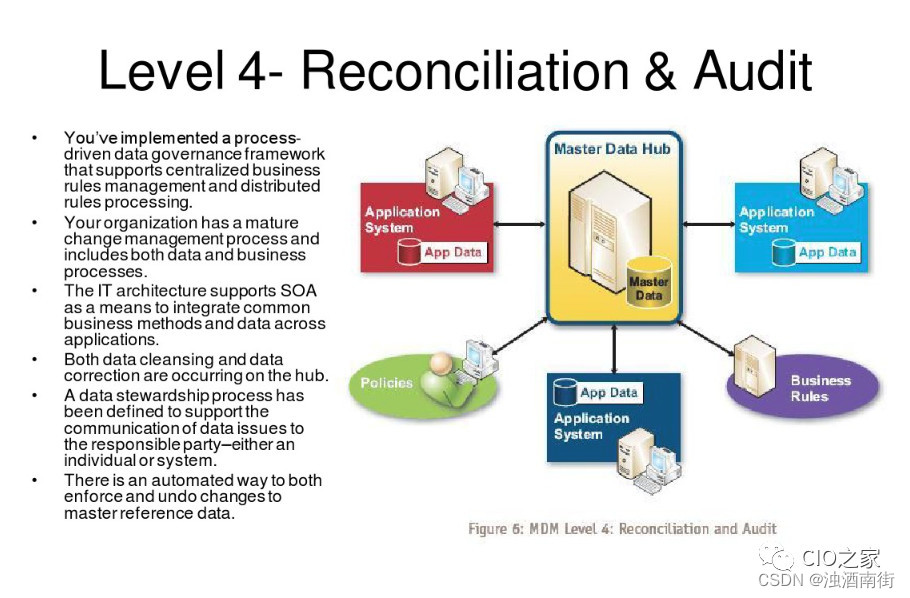
![[unity3d] GUI control](/img/ef/9de2aa75c67cf825983867a913db74.png)
